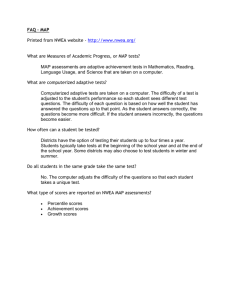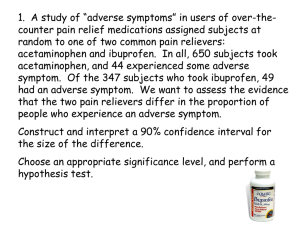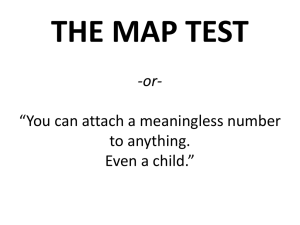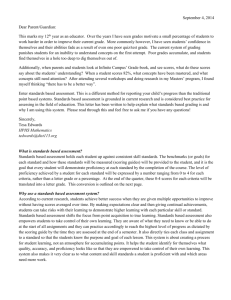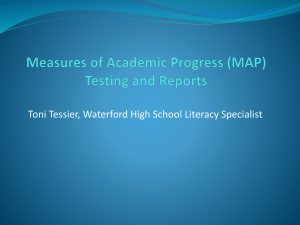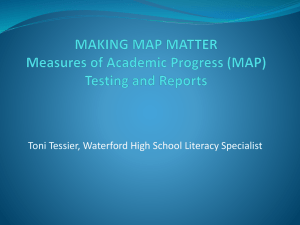NeSA Linking Study
advertisement
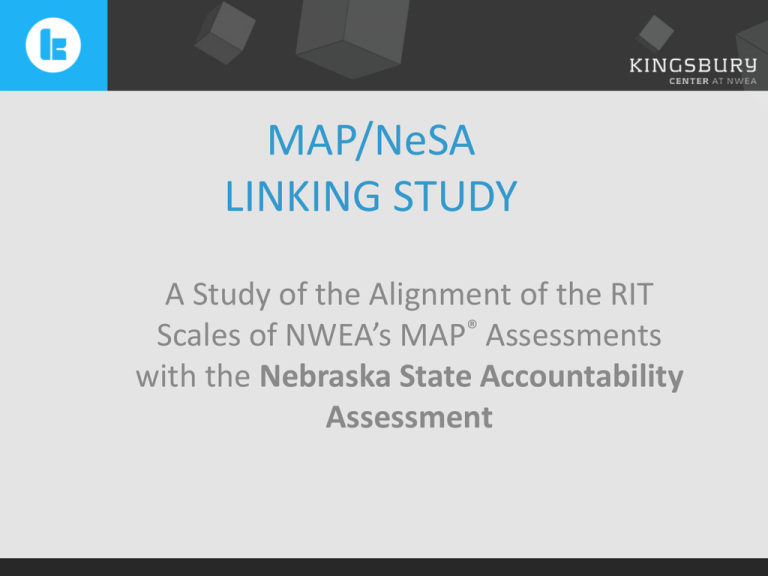
MAP/NeSA LINKING STUDY A Study of the Alignment of the RIT Scales of NWEA’s MAP® Assessments with the Nebraska State Accountability Assessment Agenda • • • • • • • Sampling Cut Scores: Reading & Math Probabilities Chart Correlations (Pearson r) Accuracy Chart Uses & Misuses of this Information Q-N-R Methods: Sample Test Unique District Count Test Season NeSA 14 Spring 2011 Scores Total Matched Record Pairs Unique Student Count 7081 7081 Definitions: “Current Season” = spring testing, used “equipercentile” method was used (50% probability of being proficient) “Prior Season” = fall testing, used a percent of population at the proficiency cut point method Sample by Grade Normal sample size is 1000 per grade 11th grade has fewer students than a normal alignment study TABLE SET 1 – MINIMUM ESTIMATED SAME‐SEASON (SPRING) RIT CUT SCORES CORRESPONDING TO STATE PERFORMANCE LEVELS *Note: the cut scores shown in this table are the minimum estimated scores. Meeting the minimum MAP cut score corresponds to a 50% probability of achieving that performance level. TABLE SET 1 – MINIMUM ESTIMATED SAME‐SEASON (SPRING) RIT CUT SCORES CORRESPONDING TO STATE PERFORMANCE LEVELS *Note: the cut scores shown in this table are the minimum estimated scores. Meeting the minimum MAP cut score corresponds to a 50% probability of achieving that performance level. TABLE SET 2 – MINIMUM ESTIMATED PRIOR‐SEASON (FALL) RIT CUT SCORESCORRESPONDING TO STATE PERFORMANCE LEVELS TABLE SET 2 – MINIMUM ESTIMATED PRIOR‐SEASON (FALL) RIT CUT SCORESCORRESPONDING TO STATE PERFORMANCE LEVELS TABLE SET 3 –ESTIMATED PROBABILITY OF SCORING AS PROFICIENT OR HIGHER ON THE STATE TEST IN SAME SEASON (SPRING) This table provides the estimated probability of passing the state test based on a MAP test score taken during that same (spring) season. Example: if a fifth grade student scored 200 on a MAP test taken during the spring season, her/his estimated probability of passing the state test is 17%. TABLE 5 – CORRELATION COEFFICIENTS BETWEEN MAP AND STATE TEST FOR EACH GRADE AND TEST SUBJECT * Note: Correlations range from 0 (indicating no correlation between the state test score and the NWEA test score) to 1 (indicating complete correlation between the state test score and the NWEA test score). TABLE 6 – PERCENTAGE OF STUDENTS WHOSE PASS STATUS WAS ACCURATELY PREDICTED BY THEIR MAP PERFORMANCE USING REPORTED CUT SCORES Projected Proficiency Report What is this Information telling us? • Cut Points are “estimates” • Probabilities related to reaching “meets” or “exceeds” levels on NeSA • Students do not always perform similarly on two tests: – – – – – Motivation Physical wellbeing Emotional wellbeing Paper format vs. Computer format 80-90% chance of similar scores What is the PURPOSE? • Purpose is NOT for reporting • Better purpose is to make some preliminary estimates of proficiency in the fall based on MAP results • Mostly for internal use – identify students needing intervention • Using MAP data to report “proficiency” defeats the purpose and design of MAP assessments • The Major Purpose of MAP is to describe academic growth – Report on Growth to stakeholders Reporting Growth Data • Key Reporting Metric: Percent of students meeting or exceeding a Growth Projection • Reports to Use: – “Student Growth Summary Reports” – “Achievement Status & Growth Reports” – “Dynamic Reporting Suite – Summary Data” • Correlates growth with projected proficiency
